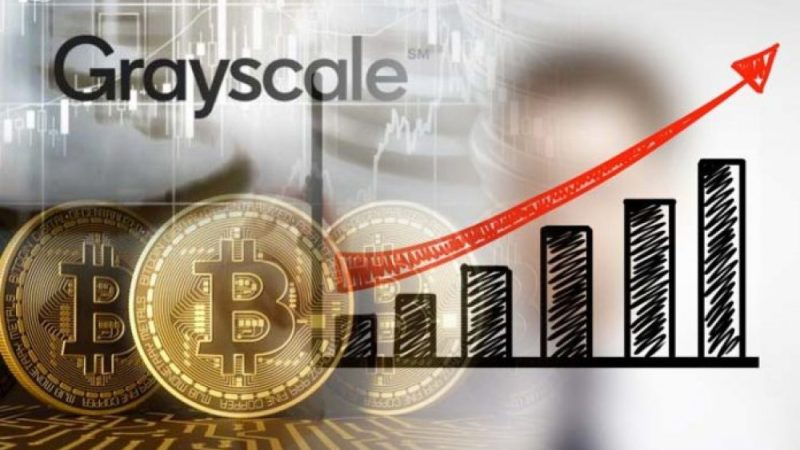Since their inception in 2009, cryptocurrencies have experienced tremendous growth in popularity. They are somewhat unique and obscure; as a result, misconceptions and rumors abound about them.
In no particular order, here are several of the most popular cryptocurrency misconceptions debunked with an analysis of facts to help you make an informed decision.
#1 There is a General Misconception that Digital Currencies Are Only Used for Illicit Activity
A widespread and long-standing myth about digital currencies is that they are only used for unlawful activities. While there have been individuals with bad intentions, as well as criminal groups, who employed digital currencies in the past, similar statements could be made about any type of money used at any point in history.
According to Chainalysis, a firm that uses blockchain data analysis to aid investigators in cryptocurrency crimes, the proportion of cryptocurrency transactions relating to illegal activity dropped in 2021 (the most recent study) to 0.15% of all transactions. The majority of the remaining 18 percent were fraudulent cryptocurrencies.
It’s crucial to know that governments and other organizations are targeting cryptocurrencies in criminal activities. Many nations have implemented anti-money laundering and countering the financing of terrorism laws, as well as agencies and teams dedicated to combating cryptocurrency usage in illicit activities.
The National Cryptocurrency Enforcement Team (NCET), for example, investigates and prosecutes criminal cryptocurrency uses in the U.S..
#2 Cryptocurrencies don’t have value
The concept of value is subjective—something one person might see as worthless could be seen as a treasure by someone else. For instance, when Bitcoin was first introduced in 2009, it was only worth thousandths of a cent. However, its popularity grew over time until it reached $69,000 per Bitcoin in 2021. This example shows that how an asset is perceived by society plays a big role in determining its value.
ETH, or Ethereum, is a blockchain technology that serves as the foundation for non-fungible tokens and other digital asset ownership applications. Even though it doesn’t have the same dollar value Bitcoin does, ETH is much more valuable to companies developing financial products that use Ethereum smart contracts.
Investors and businesses have started investing in bitcoin for financial, investment, venture capital, and other purposes. Galaxy Digital Holdings is a financial services and investment firm with over $2 billion in digital assets under management as of July 2022.
#3 Cryptocurrencies Aren’t as Secure as You Might Think
Cryptocurrency works by utilizing a blockchain. A blockchain is a recorded database that uses encryption methods to ensure its security. As new transactions are inputted into the blocks, previous transaction information is carried over and also encrypted.
Each new block in the chain builds on the one before it, and a network of automated verifiers must confirm that data contained in the transactions is correct. It’s nearly impossible to modify information on the blockchain to steal cryptocurrency because of encryption, connected blocks, and consensus techniques.
The security of Bitcoin, in particular, is questioned. There are several issues that threaten the stability and integrity of Bitcoin and its community. The first is how individuals use cryptocurrency such as wallets and centralized exchanges to organize transactions. It’s all but impossible to move bitcoin from one user to another without worry, but the platforms and programs used to store and access it may be hacked or tampered with.
There are a few highly secure techniques for keeping your cryptocurrency safe. You may, for example, keep your crypto asset keys off the exchanges and in cold storage. Only the amount you wish to use should be transferred to your hot wallet through a secure, wired connection on a non-mobile device like a personal computer when you want to utilize it.
#4 Cryptocurrencies Are Not Good for the Environment
There is a lot to be concerned about when it comes to the environmental effects of digital currencies. Some cryptocurrencies employ a mechanism that relies on computational power and substantial amounts of energy to authenticate and validate transactions. As popularity has risen, Bitcoin has grown more popular and valuable; as a result, huge mining operations have emerged to capture the bitcoin market.
All of these cryptocurrency mining farms use a lot of energy to run the equipment, which totals an network energy consumption rate similar to that of some small countries. The environmental effect this has greatly depends on where the farm is getting its power and how much coal or other nonrenewable resources are being used because those have a larger negative impact on the atmosphere.
The environmental impact of mining depends on how the operations are powered. If most of the electricity comes from fossil-fuel-powered grids, then there is carbon pollution. If mostly sustainable energy powers the mining, then the environmental impact is lower.
The reactivation of old, fossil fuel-powered plants to support bitcoin mining raises concerns for environmentalists and countries working to reduce their carbon footprints.
#5 Cryptocurrencies Are a Scam
Cryptocurrencies have gained substantial traction in the retail and commercial world. People are using them for personal transactions, and governments are striving to regulate them. The majority of cryptocurrencies do not contain any programming, code, or malevolent artificial intent that seeks to steal money from you.
However, there are fraudsters who attempt to deceive you out of your cryptocurrency or cash. For example, there have been several unregistered initial coin offerings—unregulated fundraising for new cryptocurrency projects—that turned out to be hoaxes. Someone may try to persuade you to accept unverified transactions in other bitcoin scams, or pretend to be government officials and ask you to pay your bills in cryptocurrency.
While you can never be guaranteed that you won’t get scammed, being knowledgable and aware of the signs will help to decrease your chance s of it happening.
#6 Cryptocurrencies Are Real Money, Not Securities
The International Monetary Fund considers money to be a store of value, unit of account, and medium of exchange that is widely accepted and may be translated into prices. The Financial Industry Regulatory Authority (FINRA) defines cryptocurrency as a digital representation of a stored value secured by cryptography.
The Internal Revenue Service views cryptocurrency as “convertible” currency—one that has an equal value in “real” currency. Transactions in cryptocurrency are taxed, and capital gains or losses from holding them must be reported on your tax filings.
Lacking guidance from the Federal Accounting Standards Board and Generally Accepting Accounting Principles, accountants have been instructed to account for cryptocurrencies as intangible assets with an indefinite life and to measure any crypto assets at cost rather than value.
Vendors are increasingly accepting Bitcoin, Ether (ETH), and other cryptocurrencies in exchange for their goods—you may also trade your crypto for real money at numerous cryptocurrency exchanges.
#7 Cryptocurrencies will eventually replace cash
Cryptocurrencies have only been around for a short while, in comparison to fiat currencies which date back centuries. China is rumored to be the first developer of fiat currency, issuing it around 1,000 CE. However, many other countries have since adopted this type of currency as well.
Although it would be a difficult feat, cryptocurrency could potentially replace fiat currency if enough people adopted it. If value and purchasing power can be established, there is a chance that it may happen on a large scale. Perhaps if merchants began posting prices in cryptocurrency and more people started using it regularly to purchase items, this could begin a snowball effect.
However, governments and officials will not willingly give up fiat money since the existing system of controls for collecting taxes and funding government-sponsored programs and services. Social programs that people rely on would cease to exist if taxes are not collected, and other government financing may run out.
In addition, because cryptocurrency is decentralized, there would be no way to control inflation through standard monetary policy tools. The lack of ability to use traditional central bank policies could create unknown effects on a country’s economy. Without built-in ways to affect inflation, employment or growth found in blockchain technology and cryptocurrency, new methods for influencing the economy would need to be devised.
#8 Cryptocurrencies are a temporary trend
Computers, the internet, and email have come a long way since they were first introduced. They are now essential to many people’s personal and work lives. It is tough to predict where cryptocurrencies will be in the next few decades; however, the technology they introduced and the products they inspired will likely continue to be developed and refined.
Decentralized finance systems are beginning to take shape, attracting the attention of financial institutions and consumers. Some governments are looking at ways to bring legally-validated cryptocurrencies linked to a more stable asset into circulation, while others are investing heavily in Bitcoin and altcoins.
Blockchain technology is being used by these companies to connect the real and virtual realms, with non-fungible tokens serving as a building block for this fusion. Any asset or value may be assigned to non-fungible tokens, and they may be created for anything imaginable; the virtual and real realms are on a collision course, and cryptocurrency is likely to play a role.









